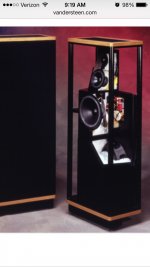How feasible is it to address step response issues using DSP?
And how do full fange speakers fare in the step response department compared to multi-way arrangements?
And how do full fange speakers fare in the step response department compared to multi-way arrangements?
Full range speakers have one driver so inherently have a good step response. It is mostly limited by how low the frequency can go so the step right triangle won't be longer than about 2-3ms. In Wesayso's towers though, the 25 drivers have cone area of a 15in driver so can reach bass levels in 17Hz range. This gives a long 10ms step triangle which is extremely difficult to achieve as it also means phase is flat almost all the way down there too.
It will be almost impossible to have a time aligned speaker system without active DSP.
I'm confused now. Couldn't the proper time-arrival (which I equate to being essential for good imaging) at the listening position be obtained by moving the relative position of the driver/baffle in space?
At least I thought that was the point of what Richard Vandersteen is doing here (see picture).
My Dad owns a pair of these. They sound "really, really" good. I can clearly hear not only the holographic image of sounds that seems to originate from between the speakers, but there's a few recordings in which sounds seem to come from behind me when I'm facing the speakers. The only speakers I've heard in person that can do this better are Avalon Speakers, but there in a much higher price range.
Attachments
- Status
- Not open for further replies.
